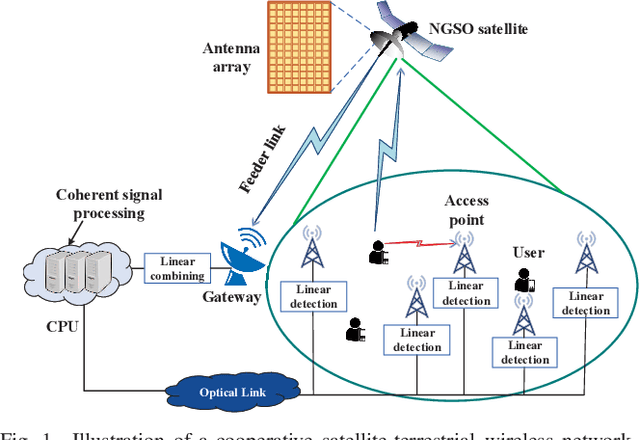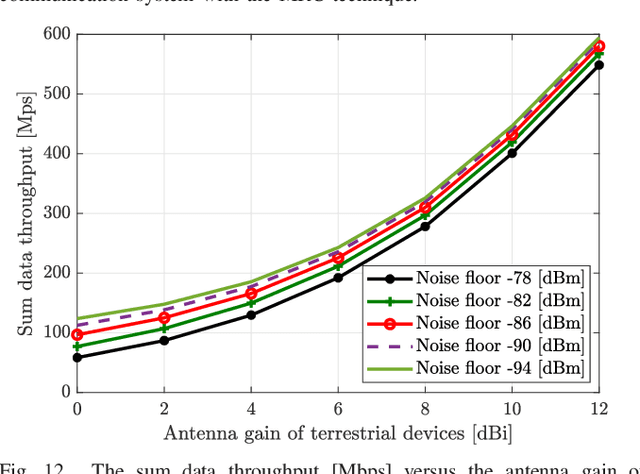Space-Terrestrial Cooperation Over Spatially Correlated Channels Relying on Imperfect Channel Estimates: Uplink Performance Analysis and Optimization
Paper and Code
Dec 21, 2022



A whole suite of innovative technologies and architectures have emerged in response to the rapid growth of wireless traffic. This paper studies an integrated network design that boosts system capacity through cooperation between wireless access points (APs) and a satellite for enhancing the network's spectral efficiency. We first mathematically derive an achievable throughput expression for the uplink (UL) data transmission over spatially correlated Rician channels. Our generic achievable throughput expression is applicable for arbitrary received signal detection techniques under realistic imperfect channel estimates. A closed-form expression is then obtained for the ergodic UL data throughput when maximum ratio combining is utilized for detecting the desired signals. As for our resource allocation contributions, we formulate the max-min fairness and total transmit power optimization problems relying on the channel statistics for performing power allocation. The solution of each optimization problem is derived in form of a low-complexity iterative design, in which each data power variable is updated relying on a closed-form expression. Our integrated hybrid network concept allows users to be served that may not otherwise be accommodated due to the excessive data demands. The algorithms proposed to allow us to address the congestion issues appearing when at least one user is served at a rate below the target. The mathematical analysis is also illustrated with the aid of our numerical results that show the added benefits of considering the space links in terms of improving the ergodic data throughput. Furthermore, the proposed algorithms smoothly circumvent any potential congestion, especially in face of high rate requirements and weak channel conditions.
 Add to Chrome
Add to Chrome Add to Firefox
Add to Firefox Add to Edge
Add to Edge